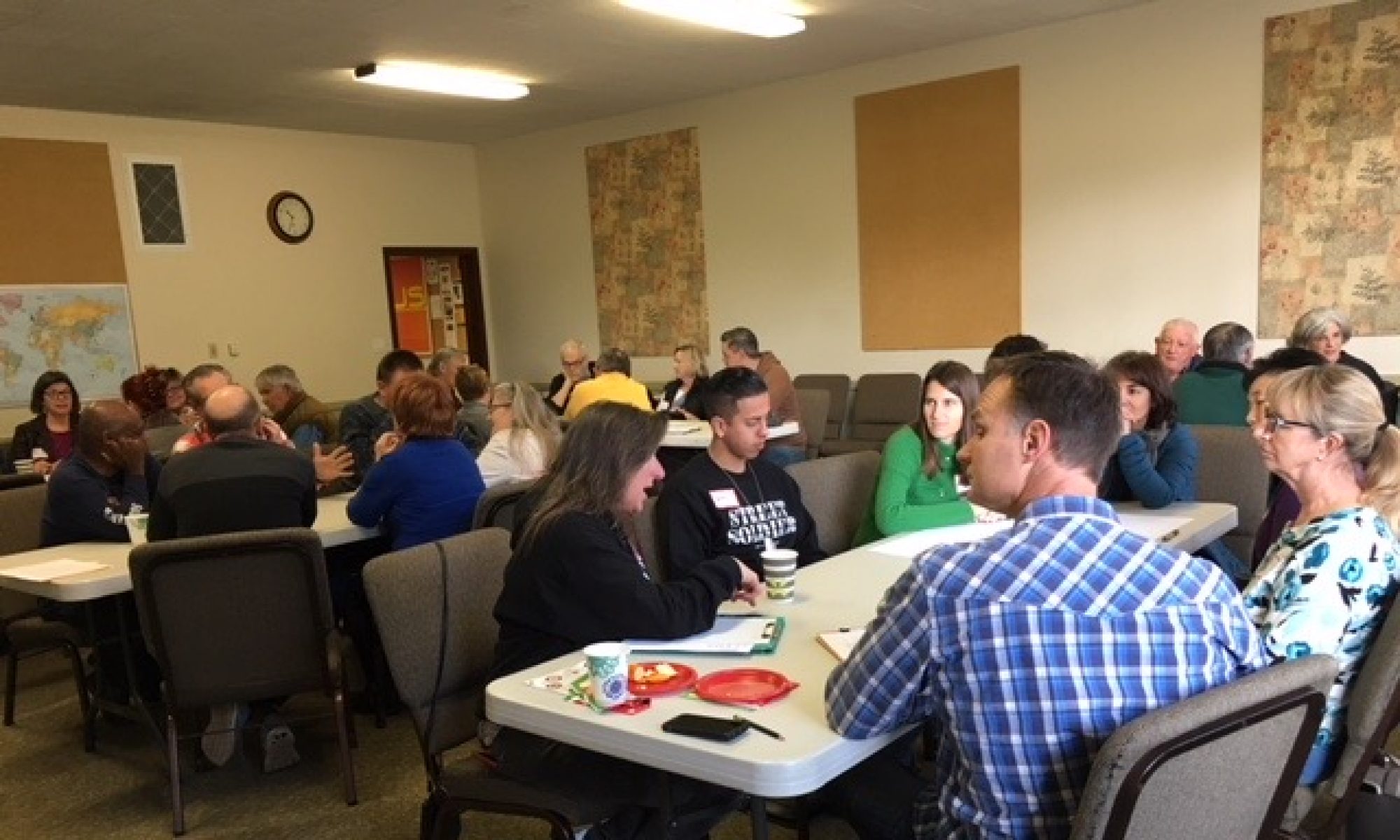The Strategic Importance of Promoting Healthy Districts
Thoughtfully submitted by Santa Rosa Together
This paper is being presented by Santa Rosa Together. Our mission is to support local democracy through advocacy for city processes that maximizes citizen engagement and a bottom up approach to planning. We are all volunteers motivated by a strong hope for the future of our community and a mutual understanding that the answers we need to deal with the challenges and opportunities before us are present in the neighbors that make up this beautiful city.
Our city is in a truly dynamic time. Recent years have seen several “historic” shifts in our city including the annexation of Roseland (and other parts of what is now Southwest Santa Rosa), the shift to political districts, and the impact of the Tubbs and Nuns fires. In the midst of discovering how to adjust to the implications of these events, we also are facing a number of significant issues that could in themselves have a major impact on the quality of life in our city. These include but are not limited to the lack of affordable housing, homelessness, and the legalization of cannabis. Finally, each of these events and issues carries with them financial implications that have put pressure on our city government to consider new ways to structure, new processes to adopt, and new ways to fulfill its responsibilities
Change is here. And with it comes challenge and opportunity. Santa Rosa Together sees the shift to districts as a tremendous opportunity to leverage these changes and to better tap into the resources and energy of the citizens of our city. For years, we have struggled to get a vibrant and broad community engagement. It seems that the “distance” between city hall and most neighborhoods was too far to “bridge” in many cases. But, with the shift to districts, we believe the bridge now exists to engage the diversity of geography and culture in our community, and to maximize our resources for addressing critical issues facing our community utilizing a “bottom up” approach.
In short, we believe that a healthy Santa Rosa needs healthy districts and that healthy districts will encourage and support healthy neighborhoods. This, in turn, leads to a more vibrant Santa Rosa. This paper is written to urge our city leadership to give time to practically answering the question, “What does a healthy district look like?” By answering this question, we think that the answers to many of the critical issues facing our city will become clearer.
We believe that relationally-connected and civically-engaged blocks and neighborhoods are the essential building blocks of healthy districts. Any plan to strengthen districts that does not prioritize neighborhood engagement and support will inevitably miss the target. In the wake of the fires, we have heard emphatically that the resilience of a community is determined by the strength of the social fabric of the community. Our blocks and neighborhoods are essential indicators of the condition of the relational framework of our community. For this reason, we are grateful to see efforts towards engaging our neighborhoods through the proposed NeighborFest events being planned between neighborhoods and the Office of Community Engagement and quarterly meetings of neighborhood advocates convened by Santa Rosa Together.
Districts are where our neighborhoods interface with the larger social and physical infrastructure of our community. A healthy district will require essential interactions between neighborhood leaders, our education system, law enforcement, local business leaders, and various city departments. This is not a new need, but we see the shift to districts as providing opportunity to make a more productive interaction possible. This is, of course, a process. We propose that the Council adopt a Resolution Supporting Healthy Districts in our city, which should include:
- A philosophical endorsement of the healthy districts approach from the Council.
- 2. The creation of a healthy districts “scorecard” that identifies key indicators which can help districts identify their community assets and track progress in endeavors to make their district more vibrant. Some examples of these indicators could include the number of organized neighborhoods in the district, voter registration, key crime indicators, truancy rates and school performance, emergency preparedness, physical infrastructure, availability of affordable housing, etc.
- The formation of district “forums” made up of district residents and those holding key roles in the community related to the healthy district indicators [neighborhood group leaders, school principal, police beat sergeant, key local business leader, etc.]. This group will help provide an essential component in promoting constructive interaction within the district and between the district and the City of Santa Rosa.
- Detailed and accessible
district maps that provide essential information needed for “bottom up”
planning by the district forums.
- Clearly “mapped” districts – this includes things like identifying “assets” in the district but also includes identifying the neighborhoods in the group, current zoning of district parcels, and other significant information regarding how the district is organized geographically.
- Direction from the Council to begin to consider how existing efforts might meaningfully interface with the healthy district approach. This could include looking at things like…
- The Open Government Task Force
- The design and best use of CAB
- The General Plan review process – Departmental staff, supported by a contracted consultant, will begin a bottom-up community engagement process to involve neighborhoods and districts.
- The identification of General Charter issues and parameters.
- Housing Development Community Engagement Meetings
- The pursuit of the council’s top priorities
In summary, we are proposing that the shift to districts provides the opportunity to create a framework for a more participatory and connected community and that from that framework, many of our communities most pressing issues can be more effectively addressed and more creatively approached. We urge the Council to consider this proposal and the specific steps it recommends as a chance to greatly strengthen our city and advance the vision we share for its future.
